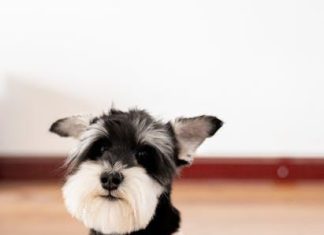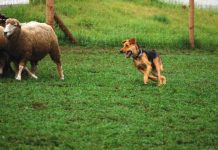Welcoming a new puppy into your home is an exciting adventure filled with joy, curiosity, and a fair share of challenges. As you embark on this journey, teaching your puppy to follow commands is one of the most rewarding tasks, laying the foundation for a harmonious relationship built on trust and understanding. While treats are often the go-to tool for many trainers, they are not the only way to communicate effectively with your furry friend. In this guide, we will explore how to teach your puppy to follow commands without relying on treats, using methods that focus on positive reinforcement, consistency, and the natural bond you share. Whether you’re a first-time pet parent or an experienced dog owner, these techniques will help you nurture a well-behaved companion while strengthening the unique connection you have with your puppy.
Building a Bond Through Positive Reinforcement Techniques
Creating a strong connection with your puppy is essential for effective training, and one of the best ways to achieve this is through positive reinforcement techniques that don’t rely solely on treats. By focusing on verbal praise, physical affection, and play, you can encourage your puppy to follow commands while fostering trust and respect. Here are some strategies to help you build that bond:
- Verbal Praise: Use a cheerful and enthusiastic tone to praise your puppy when they follow a command. Phrases like “Good job!” or “Well done!” can reinforce positive behavior.
- Physical Affection: Show your puppy love by giving them gentle pets or scratches behind the ears when they respond correctly. This not only rewards them but also strengthens your emotional connection.
- Interactive Play: Engage in a favorite game or activity as a reward for good behavior. Whether it’s a game of fetch or a tug-of-war, playtime can be a powerful motivator.
By integrating these techniques into your training routine, you can nurture a positive learning environment that encourages your puppy to respond to commands with enthusiasm and joy, all without the need for constant treat-based rewards.

Harnessing the Power of Consistent Verbal Cues
In the journey of training your puppy, one of the most effective strategies is the use of consistent verbal cues. This approach not only fosters understanding but also strengthens the bond between you and your furry friend. To begin with, choose simple, clear words for each command. For instance, use “sit” instead of “please sit down” or “come” instead of “come here now.” The key is to ensure that each word is distinct and easy for your puppy to recognize.
Consistency is crucial. Repeat each command in the same tone and volume every time. This helps your puppy to associate the word with the desired action. Additionally, remember to be patient and offer plenty of praise. Here are some tips to maximize effectiveness:
- Keep commands short: Use one-word cues for better comprehension.
- Use a positive tone: Your puppy responds better to a friendly and encouraging voice.
- Practice regularly: Frequent practice helps reinforce the connection between the verbal cue and the action.
By adhering to these principles, you will find that your puppy is more likely to respond to your commands even without the promise of treats. This method not only promotes good behavior but also nurtures a deeper, more trusting relationship between you and your pet.

Engaging Play as a Rewarding Training Tool
Harnessing the power of play can transform your puppy’s training sessions into an exciting adventure. By using play as a reward, you not only foster a strong bond with your furry friend but also encourage them to engage willingly in learning new commands. The key is to select games that your puppy naturally enjoys and to use them strategically during training. Here are some ideas to get you started:
- Tug-of-War: This game is perfect for teaching commands like “drop it” or “release.” Simply pause the game when you want your puppy to follow a command, and resume as soon as they comply.
- Fetch: Incorporate the command “come” as your puppy retrieves a toy. The excitement of the chase and the return for another throw can be a fantastic motivator.
- Hide and Seek: Use this game to reinforce the “stay” and “find” commands. Hide somewhere in the house or yard, call your puppy, and reward them with playtime when they successfully find you.
By integrating these playful activities into your training routine, you create an environment where learning is a joyful experience. The combination of fun and focus not only enhances your puppy’s skills but also strengthens your relationship, making the journey of learning a shared joy.

Creating a Calm Environment for Focused Learning
Crafting a serene space for your puppy’s learning journey involves more than just physical arrangements; it’s about nurturing an atmosphere where your pup feels secure and eager to learn. Start by selecting a quiet, clutter-free area in your home, away from distracting noises like televisions or loud appliances. This dedicated zone should be consistent, helping your puppy associate it with training sessions. Consider adding soft, non-slip mats or carpets to provide comfort and stability.
- Natural Light: Ensure that the space is well-lit with natural light, which can have a calming effect on both you and your puppy.
- Minimal Interruptions: Inform family members to avoid entering the training area during sessions to maintain focus.
- Calm Background Music: Gentle music can help reduce anxiety and set a tranquil tone for learning.
- Aromatic Touch: Use a pet-safe diffuser with calming scents like lavender or chamomile to enhance the peaceful environment.
By consciously designing this environment, you lay the groundwork for effective learning, enabling your puppy to absorb commands more readily without the need for treats. It’s about fostering a positive and focused interaction where your pup can thrive.
















